Maori Magic
After fishing with van da Loo, I caught an Air New Zealand island hopper to Wellington, the capital, and went on to Taupo. There, I fished the Tauranga-Taupo River with guide Brent Pirie, a spry 50-year-old who has been guiding in the North Island for 14 years. The freestone river, not as well known as the nearby Tongariro, gave up some really fat, healthy rainbows on the fly, my largest going over 6 pounds. I spied that one rising 2 inches off a rock wall in what is known as the Cliff Pool, and was able to plop my fly, a spidery looking thing called a Turks Tarantula, right into his feeding lane. His dogged fight, with hard runs up and down the pool, almost breaking me off on an underwater log, was just spectacular.
Brent and I had fished on Maori forest land, hiking to the river through a dense forest of fir trees and lupin and Toi Toi bushes, the latter characterized with white, streaming, brush-like heads. We hit many deep, fishy looking pools as we went. The Maoris, who came to New Zealand from Polynesia in 1280, before the Europeans even knew it existed, make up 14 percent of the country’s population today. Their rich culture is found everywhere, from the loud, exotic native dances (called “Kapa haka”), to haunting music performed with trumpets (“putatara”) and wooden flutes (“koauau”) that are played through the nostril, to native delicacies such as fish wrapped and steamed in peppery taro leaves in a “Hangi,” or pit fire.
Over a Rainbow
Leaving Taupo, I drove north through rolling farm and sheep country. My destination was Treetops Lodge, a hunting reserve near the town of Rotorua. Driving up into the mountains, I almost went off the road as a monstrous red stag, eyes bulging out of his head and steam billowing from his nose, roared and bellowed at me from behind a roadside fence. With vast, sweeping, palmated antlers, he threw his head back and roared at the sky, his sexual instincts aroused as the rut was just coming into play. I’m not sure; maybe he found my tan rental car attractive?
Treetops was a sprawling, well-appointed lodge, with 10-pound rainbows finning in the pool that you crossed to reach the front door, a massive oak slab featuring carved trout and stag. Dinner, a rack of lamb (what else would you eat in New Zealand?), served with a red Zinfandel from a local vineyard, was exquisitely delicious. I toddled off to bed and hit the sack, full of anticipation for the next day’s fishing, a heli trip to the central plateau area.
I met with guide John Hamill in the dining room at 7 and, after a quick breakfast, we hopped into his Toyota Landcruiser for the 45-minute drive to the helicopter base. When we arrived at Lakeland Heli, in Murupara, I was astonished to see that the parking lot – about the size of a rugby field – was packed with cars.
“Stag hunters,” John remarked. “It’s March, which is early fall in this part of the world. Hunting season just started. Don’t worry, they’re not fishermen. Where we’re going, we won’t be seeing anyone else all day.”
The flight in, over steep, conifer-blanketed ridges and valleys, was awe-inspiring, like flying over the set of Lord of the Rings. Eventually, we started following a small ribbon of an azure stream, zigging and zagging until landing on a 10-yard-wide gravel bar.

“See you in 8 hours and 5 kilometres,” our pilot yelled as John and I carried our gear, hunched over to avoid the rotors, away from the chopper. Then the copter was gone, raising straight up and over the ridge. In minutes, the throbbing of the blades was gone, replaced by the sounds of rushing water and the shriek calls of “Tui,” or bell, birds.
John grabbed his pack and disappeared upriver. I finished stringing up my rod, tied on an Adams, and hurried to catch up. As I rounded the bend, I saw John up ahead, waving frantically. “Quick, get your camera,” he instructed when I got up to him, “there’s a pair of blue ducks up ahead, in the pool. They’re a highly endangered species. If you just crawl up around that boulder, you should be able to get some photos.”
Leaving pack and rod behind, I hurried up to the rock, peered over, and there were two blue-gray ducks, with chestnut-colored breasts, tannish beaks, and bright yellow eyes, preening on the bank. Every once in while, they’d make throaty noises, not really quacks but croaks. I took a dozen photos before they saw me. With loud whistling calls, sounding like “wh-io,” which is also their name, they rocketed up through the rapids. I gave John the thumbs up, and we, too, were off to the next pool.
The drill on this river, as it was on the Wairau, was to hike from pool to pool, scanning the water in each section before moving on. Some pools held nothing, some held one good-sized fish. It was just like still-hunting, except I was armed with a fly rod, not a 30-06.
“It takes about a half-kilometre of water to support one trophy fish,” John told me. “All the smaller fish stay in the riffles and tributaries; if they stray into a pool, they’ll get eaten by one of the big bows.”
Unlike the South Island streams, this one, and most like it on the North Island, held only rainbows. The first big one I encountered was at the base of a riffle, feeding, a dark shadow deep in the limpid water, wavering back and forth, sometimes drifting to the tail of the pool, sometimes hanging in the fast water. Edging into position, I cast my nymph (John insisted I change flies for the lower river) into the fast water, then let it drift down into the pool. When the dry fly indicator went under, I struck back and was hard into the solid muscle of a big fish. The fight, unfortunately, lasted about 5 seconds, as the big bow turned, then blasted downstream in a run of fury and strength. Trying to prevent him from getting into the fast water below, I deftly managed to snap him off. Ugh, here we go again.
“No worry,” John told me. “Next time, though, let him go and run after him. No way you’re going to stop a fresh 6-pounder like that.”
I didn’t mess up at the next pool, taking a 6-pounder from a turn pool backed by a cliff. Nor did I screw up on the next pool, a stretch that held the biggest fish of the whole trip. Scrambling over rocks to bypass a long, shallow stretch, I saw John hunched behind some tall grass, peering into the water from a ledge overlooking the river. When I reached him, he pointed down at a spot where fast water cascaded into a pool that appeared to be at least 10 feet deep. There, behind an underwater boulder, in a V-shaped pocket, was an imposing, dark shape, actively moving back in the water, feeding.
“I’m guessing 10 pounds,” he whispered. I agreed. It was a monster. I felt a knot in my stomach as he told me, “Go downstream a bit, then wade in quietly and move up to that spot on the far bank. Remember, quietly. This is his living room. He’ll recognize strange sounds.”
It worked. I got to where I had to go, slowly, silently. Stripping about 30 feet of line off my reel, all the while listening to a voice in my head that was saying Don’t screw up. Do it right. This is why you came here., I made two false casts, and laid my dry fly (I had switched again) 10 feet above the big bow, on the edge of the fast water. As the fly came floating out of the riffle, I stripped line frantically and watched as it floated around the boulder. The shadow shot up from the pocket and slurped in my fly in one lightning-fast movement. Setting the hook, I felt raw-powered resistance as the fish rocketed upstream, quickly taking all slack out of my line. Stopping him from getting into the rapids, I held my rod high as the fish now shot downstream past me. I let him run, then turned him with some side pressure before he hit the fast water below. (I was ready to run, but I didn’t have to.) Five minutes of back and forth, up and down, and I was soon guiding the bow into John’s net.
The fish was a hooked-jaw male with blood-red flanks, edged with tints of pink and green. John held up the net so I could read the scale: 9 3/4 pounds! After some whoops and high 5s, we quickly took photos, then got the fish back into the water and held him facing upstream until he regained his strength. With a surge, he bolted out of my hands and finned back to his boulder.
The day could have been over then, and I would have been happy, but I took more fish from other pools that afternoon, all over 5 pounds, none quite approaching that mammoth bow. And then, before I knew it, the day was coming to an end. We waded through a stretch surrounded by tropical ferns and palm trees, with a waterfall cascading from a cliff 30 feet above us into another translucent pool, and then I heard the wopwopwop of an approaching copter. We hadn’t made 5 kilometers, and the pilot had to improvise and land on a small rock pile, but he made it. We slowly climbed aboard, carefully shifting our weight onto the craft so as not to tilt it as he half-hovered on the rocks, and then we were off, back to the helicopter strip, then back to Treetops. The next day, I was off to the airport in Auckland. Then I was on an Air New Zealand 747, back to LAX and then on to JFK. Monday morning, I was back in the office, wondering through a jet-lagged haze how my time in New Zealand could have possibly gone by so quickly.
I know why, though. You see, you can never get enough of the things that you’re passionate about. That trip, a lifetime worth coming, capped off a dream for me. But now that I’ve done it, I’ve got this problem. You see, I liked it too much, and now I’ve got a new plan. I want to fish other streams in New Zealand, stay at other lodges, maybe rent an RV and just drive around. I also want to hunt red stag. And I never really had time to do other touristy things, like tour the towns, go to the beach, or check out the many vineyards that New Zealand is so famous for.
I know where this is leading.
TRIP FACTS
GETTING THERE: A number of carriers fly to New Zealand, but I can’t imagine how any could be better than Air New Zealand. With clean, modern planes; good food and service; plus a wide array of current movies to choose from, ANZ is one of the finer airlines I’ve flown. Airnewzealand.com
LODGING: I stayed at four different lodges. The first, Stonefly Lodge on the South Island, overlooking the Mouteka River, is dedicated to fly fishermen first (Stoneflylodge.co.nz). After Stonefly, I stayed at Te Puna Wai, a quaint, refurbished, 150-year-old bed and breakfast in Nelson (tepunawai.co.nz).
On the North Island, I spent one night at a luxury resort in Taupo, Huka Lodge (hukalodge.com). After that, my last two nights were spent at Treetops Lodge, a hunting establishment near Rotorua (treetops.co.nz).
If you want to keep costs down, motels, youth hostels, and campgrounds abound. Go to http://www.newzealand.com/travel/travel-planner/my-travel-planner.cfm.
FISHING GEAR: I took weight 6 and 7 outfits, rigged with floating lines and knotted leaders. A 5-weight would have worked as well in most situations. Flies such as the Adams, Muddler Minnow, and Gold-Ribbed Hares Ear catch fish just as well there as well as here. Pack tippets down to 5x, and bring along some fluorocarbon, in case you need to go deep with nymphs. As mentioned, I left my waders at home. If you take your own, make sure they have sticky rubber soles with cleats; felt soles are illegal—a preventative measure against invasive species. Waders and boots will be inspected at airport customs; any boots that are damp or caked with dirt or mud will be sanitized and returned to you in sealed plastic bags, before you’re allowed to enter the country.
I carried all my gear in a FishPond Trailhead Rolling Rod/Gear Bag. When fishing, I carried flies, tippets, and my stream gear in a FishPond Double Haul vest-backpack system. Fishpondusa.com
If you want help setting up a flyfishing itinerary, get in touch with the folks at Best of New Zealand Fly Fishing (bestofnzflyfishing.com).
INSIDER TIPS: Car rental is easy. I rented mine from Budget, which has locations all over both islands. (budget.co.nz) You’ll need your driver’s license to rent a car. They drive on the left-hand side of the road in New Zealand, something I had to constantly be aware of. Keep this in mind when planning your trip; you may not want to hop in a car and start driving when you get off your airplane after flying for 12 hours.
When I got to Auckland, I also stopped by the Vodaphone booth and rented a phone for my 8-day stay. This helped me, as far as staying in touch with all the guides and lodges that I worked with while there. Vodaphone.co.nz.
You’ll need your passport. All major credit cards are accepted on both islands.




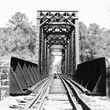
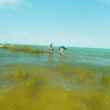
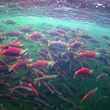




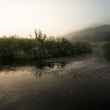
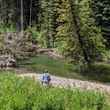



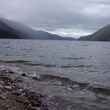
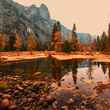



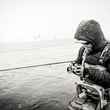
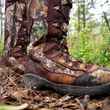



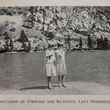
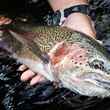

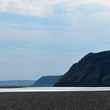
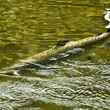
Comments